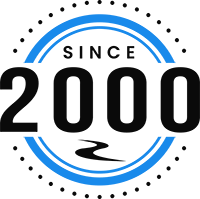How to Use AI with Search Engine Optimization
Artificial Intelligence (AI) is here to stay and will only continue to grow moving forward. One giant technology that is embracing AI is search engines. Companies like Google and Microsoft are using machine learning and AI to learn how people search. With this understanding, they can better match search intent with the most accurate information.
This information / search engine results can include webpages, images, video, and instant information through features like Google’s universal search results. As of today, there are 37 different search engine result page (SERP) categories. This is a number we don’t see slowing down any time soon. Research indicates that “84% of queries on Google return universal search results. This occurs as Google uses AI to match the layout of search result pages to the user’s intent.”
Can I Use AI to Automate and Improve My SEO?
Of course, there are times to use a tool and there are times not to, especially with AI. When seeking improvements in SEO performance, there are 3 key scenarios where AI can make your optimizations more efficient:
- Insights.
- Automation.
- Personalization.
Insights
Some popular ways that AI and ML can assist with gathering insights from search engine optimization (SEO) efforts include:
- Market trends analysis.
- Site performance analysis.
- Competitor insights.
- Customer intent reports.
- SERP performance.
- SEO and pay-per-click spend management.
What are some SEO tasks that can be improved with AI?
ML and AI can be used for many things but a great start would be for daily or repetitive tasks. This includes but is definently not limited to:
- Understand underlying need in a customer journey - determine where the user is the buying journey, what information are they looking for, and how can you help them move closer to the purchase cycle.
- Identify content opportunities - review competition data, search impression queries, and related searches along with third-party tools like AnswerThePublic to collect topic and content ideas for your website.
- Define opportunity space in the competitive context - collect and recieve suggestions on optimizations for queries and topics with high relevance, searches, and lower competition.
- Map intent to content - gain information on intent by reviewing search queries and keyword research and finding the best page to point the users. This process can also be used to create new landing pages.
- Use structured data and markup - collect structured data on compeititon websites to review best navigation, taxonomy, and struture to create or improve your websites crawlability and search engines understand of your products and services.
- Invest in more long-tail content - use long-tail data from multiple tools to obtain queries with high serch volume and low compeition for high search engine visibilty.
- Enure exceptional crawlability - confirm that your content is able to be crawled and viewed easily by all search user-agents.
Automation
Some AI methods to automate your SEO duties:
- Technical audits.
- Keyword research.
- Content optimization.
- Content distribution.
- Tag management.
- Internal linking.
How to Get started with AI for SEO automation:
- Break down tasks and score their automation potential from 0-10.
- Handle simple but time-intensive jobs with use rule-based automation.
- Lower the repetitive tasks but keep the human touch to improve efficiency.
- Choose the right quality and quantity of data for your ML algorithms.
- Improve engagement rates by focusing on user experience and implementing sped monitoring and alerts.
Personalization
- Create personalized content for intended persona, customer journey stage, and marketing channel.
- Improve UX and increase conversions through personalization.
- Associate query and intent by providing semantically specific pages.
- Nurture leads with personalized messages to the right audience across search and social.
- Leverage AI to publish content at the perfect time on the best networks.
Questions to Ask Before Starting
- Will the time saved and the efficiency built be worth the time and resources spent?
- Where will you be collecting the datasets involved in the project. This includes search, social, local, and third-party tools.
- How are the datasets collected and how are relevant are they? What is the freshness, accuracy, and frequency?
- What machine learning applications will be used to identify the consumer patterns and how sophisticated are they?
- How will this impact your company processes and capabilities?
- What problems will this solve and efficiencies improve?
- Will intuitive analytics and dashboard be easily understood when shared with non-technical shareholders across the organization?
Free & Paid Datasets for Machine Learning
Google Search Console Data (free)
- Impressions
- Clicks
- CTR
- Position
- Query Position
Google Analytics Data (free)
- Sessions
- Conversions
- Traffic Sources
- Platform & Device
- Internal Search
SEMRush Data (paid)
- 120,000,000 keywords
- 417,000,000 domains
- 134 databases in 117 countries
- 16 languages
- Historical data since 2012*
- 16,137,000,000,000 backlinks
Mission:
- Find user intent
- Find Keywords/Phrases/Topics for higher search engine visibilty
- Category taxonomy
- Related products/suggested products
- Persona based automated email marketing
Reach out if you’re interested in talking more about how AI and ML can improve your SEO: https://www.linkedin.com/in/justinsmarshall
Superb Article: https://www.searchenginejournal.com/atomic-reach-ai-changed-ecommerce/310143/



